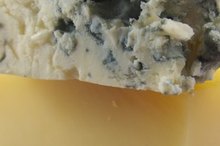What Enzymes Are Used to Break Down Carbohydrates?
Have you ever let a cracker sit in your mouth without chewing it and noticed a sweet flavor building on your tongue? That taste is the result of an enzyme trying to break down the cracker. Enzymes work throughout your gastrointestinal tract to hydrolyze the long chains of a carbohydrate and make them into smaller chains. The ultimate goal of digesting carbohydrates is to dismantle their structure into smaller molecules that your body can absorb.
Digestion and Absorption
The goal of digesting and absorbing sugars and starch is to continuously break them down into smaller and smaller molecules that your body can absorb and use. Larger starch molecules, or complex carbohydrates, require extensive breakdown. Simple carbohydrates or sugars require either one breakdown process or none at all.
Breaking Down
How Are Carbohydrates Broken Down?
Learn More
Carbohydrate digestion starts in your mouth with the help of a substance called "salivary amylase," an enzyme that breaks down starch into smaller glucose molecules called "dextrins." Dextrins are used sometimes as a thickening agent in food. The smaller chains of starch, or dextrins, get further broken down into polysaccharides and then maltose.
Main Digestion
Though carbohydrate digestion starts in the mouth, most of the actual work takes place in the small intestine. With the work of three different enzymes, carbs get broken down from polysaccharides to shorter glucose chains and disaccharides. Enzymes in the outer membrane of the intestinal cell perform the final dismantling of the carbohydrates. These enzymes are maltase, which breaks down maltose into glucose; sucrase, which breaks down sucrose into glucose and fructose; and lactase, which breaks down lactose into glucose and galactose.
Fiber
Digestive Juices & Enzymes
Learn More
Fibers linger in the stomach and delay gastric emptying, promoting a feeling of fullness or satiety. In your large intestine, hours after you've finished eating, most of the sugars and starches have been digested. The fiber is the only part of the carbohydrate that remains in your digestive tract. It attracts water, which softens the stool for passage without straining.
Related Articles
References
- Understanding Nutrition; Eleanor Noss Whitney, Sharon Rady Rolfes
Writer Bio
Carlye Waxman is a registered dietitian trained at Mount Sinai Hospital NYC in Medical Nutrition Therapy. She is a weight loss expert, private counselor and community based dietitian in New York City.









